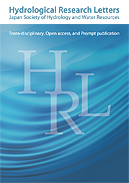Volume 15, Issue 2
Displaying 1-6 of 6 articles from this issue
- |<
- <
- 1
- >
- >|
Original Research Letter
-
2021Volume 15Issue 2 Pages 9-15
Published: 2021
Released on J-STAGE: April 01, 2021
Download PDF (7462K) -
2021Volume 15Issue 2 Pages 16-22
Published: 2021
Released on J-STAGE: April 06, 2021
Download PDF (4070K) -
2021Volume 15Issue 2 Pages 23-30
Published: 2021
Released on J-STAGE: April 15, 2021
Download PDF (7582K) -
2021Volume 15Issue 2 Pages 31-36
Published: 2021
Released on J-STAGE: May 11, 2021
Download PDF (542K) -
2021Volume 15Issue 2 Pages 37-43
Published: 2021
Released on J-STAGE: June 22, 2021
Download PDF (5133K) -
2021Volume 15Issue 2 Pages 44-49
Published: 2021
Released on J-STAGE: June 29, 2021
Download PDF (586K)
- |<
- <
- 1
- >
- >|
